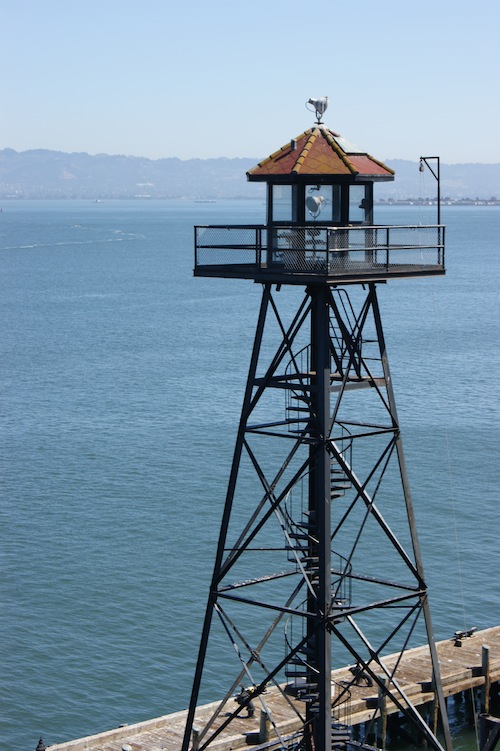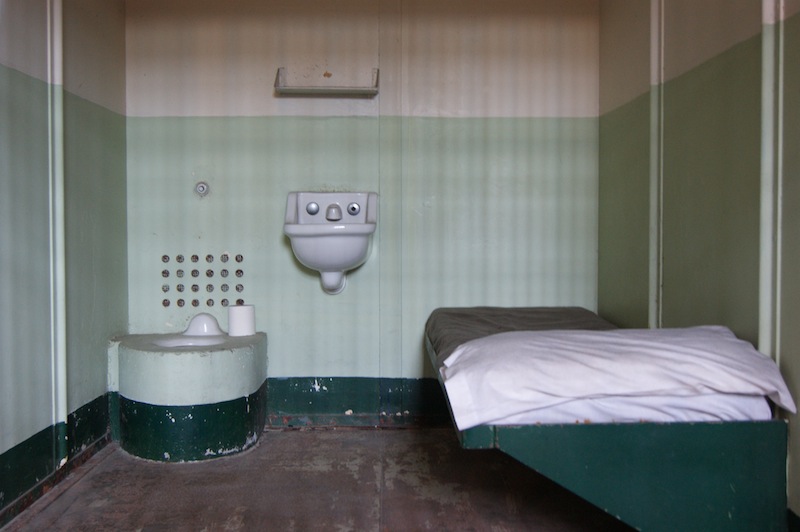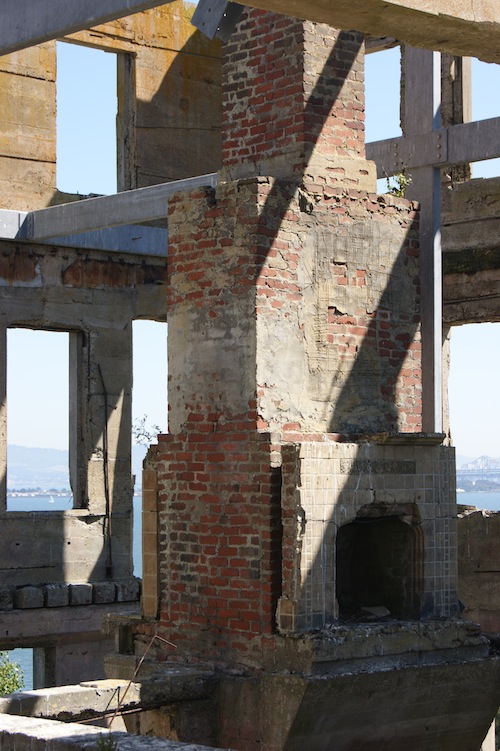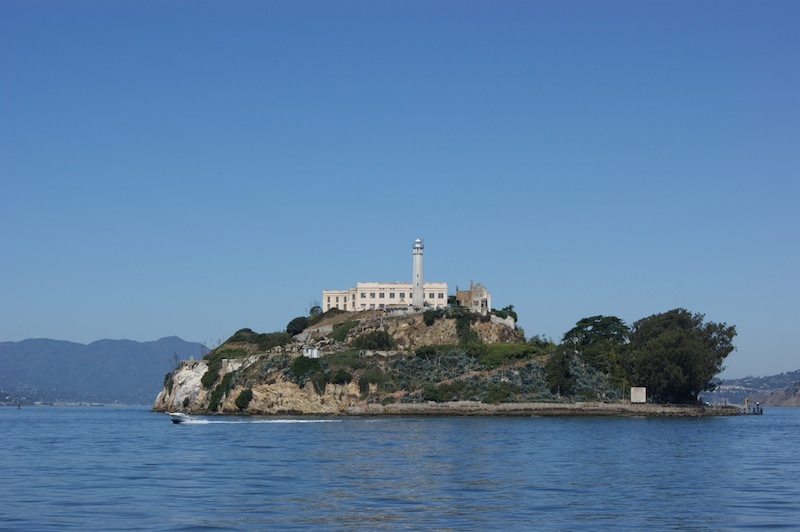Some tourist attractions are a class act while others really manage to screw up the experience. Alcatraz in San Francisco may be a tourist trap but it’s a winner from start to finish.
It’s deluged with humanity, which is ironic for a place that many tried to flee during its time as a military prison in the 19th century and a federal prison from 1933 until 1963. My normal aversion to crowds of fellow tourists disappeared as I fell under the spell of an island that’s now a National Park.
We caught the ferry to Alcatraz from a sunny Pier 33 with holidaymakers from around the world and morbidly obese Americans. Without the notorious fog to ruin things, we could enjoy the great views across to the Golden Great Bridge and the city.

Alcatraz turned out to be a brilliantly efficient tourism machine. We never felt pushed around, hurried or overwhelmed by officialdom or our fellow visitors from the moment we stepped off the boat to the moment we left. Unlike the men who arrived here back when it was a prison, we only got the best of American welcomes.
The handset commentary was one of the best I’ve listened to at an attraction. It brought to life the story of the prisoners who were confined in the stark, cold cells as well as the guards who controlled their lives and tried to prevent them escaping. What made it was that men from both sides contributed to the commentary, describing in intimate and captivating detail the challenges of life on the rock.

How many attractions have we been to where the commentary on the handset drags so tediously? Alcatraz succeeds because its focus is firmly on the people and their stories, rather than on the structures. The latter play the supporting role.
While we were able to walk around many of the historic buildings, much of the island is out of bounds – partly to protect our fair souls and partly to stop us from trampling over the flora and fauna. Some of the old military and prison buildings looked ruined beyond hope and far too dangerous for us to be clambering over.
But the main cell block was well preserved and one of the eeriest buildings I’ve ever been in. Dimly lit, oh so quiet, I could almost feel the ghosts of the past hiding away in the sterile cells. No doubt, back when it was full of convicts, it would’ve been noisy and smelly beyond imagining.

The cells were tiny and must’ve driven many of the inmates to distraction with claustrophobia. It was easy to see why many were driven to planning escapes, some of them incredibly ingenious. And stories of those escapes as well as battles, revolts and the indignities of daily life were grippingly told on the commentary.
It was the regimentation that really came across, the petty rules that were so much a part of the daily routine. It was as if the regime wanted to turn the convicts into mindless robots. And while many of those inmates committed terrible acts, I couldn’t help but harbour some sympathy for what they had to go through.
We walked around the enclosed courtyard where the prisoners were at least able to stretch their legs, and where they doubtless plotted ways of escaping. We explored the dining hall and discovered the excruciatingly detailed procedures involved in feeding the prisoners. Both sites were familiar as both were used as locations in Escape from Alcatraz, the Clint Eastwood film I saw years before at the cinema and that details one of those imaginative escape plots.

It was nice to get out in the open air and a relief to feel the sun on our backs at the end of the island where an historic lighthouse stands guard. Here too stands the shell of the warden’s house, which wasn’t the victim of a prisoner revolt but instead was burned down during an American Indian Movement Occupation of Alcatraz in 1970. They held out into 1971, protesting against federal policies towards American Indians.
Beyond the island, the famous San Francisco fog had started to roll in, drowning much of the city and leaving only the piers visible.
It made the city look as eerie and as haunted as its notorious, derelict prison.

